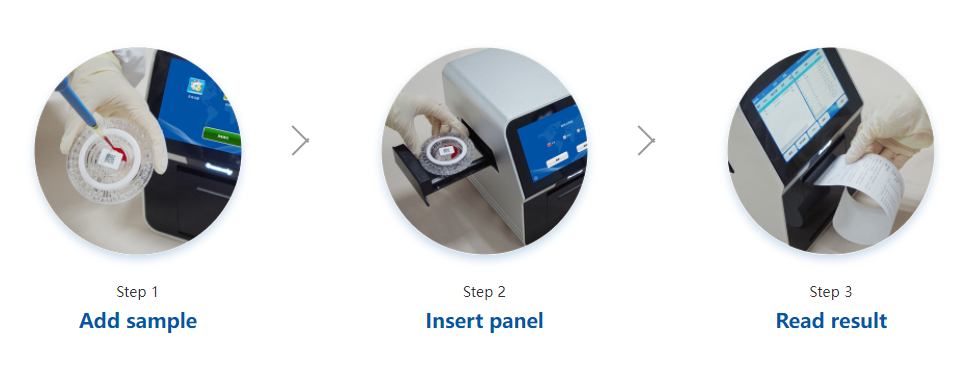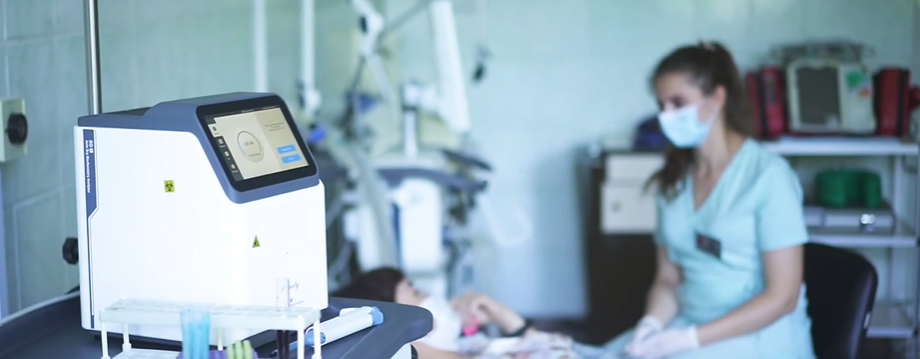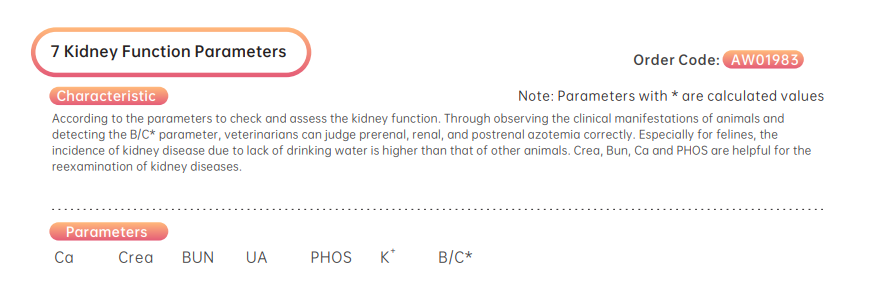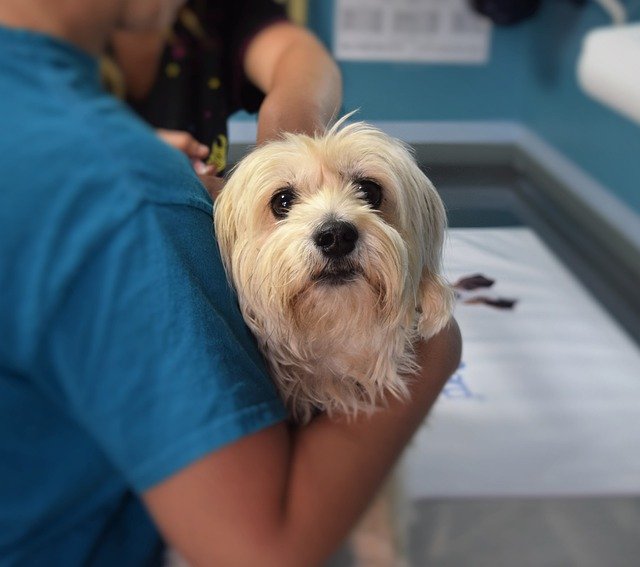A blood biochemical test is also a blood test to determine whether the internal organs (liver, kidneys, pancreas), muscles and other functions are normal. Biochemical tests are also mandatory for routine physical examinations, disease screening, pre-anesthesia examinations, and rehabilitation reviews in cats.
These basic tests, such as routine blood and biochemistry, are now commonly done for diagnosis. The veterinarian needs to determine possible diseases based on the cat's symptoms and to assist in differential diagnosis through laboratory tests to confirm the disease. It is better to have data for reference than to have the veterinarian guess directly and blindly what disease the cat has.
This article includes the following 3 aspects.
-
1. What does the biochemical examination include?
-
2. How to establish the change table of the cat's physical examination values?
-
3. Selection of biochemical tests
What do common biochemical tests look for?
Biochemical examination is one of the very important routine blood tests that can provide reference data on organ function and disease conditions. However, biochemical test data cannot be used as direct data to confirm the diagnosis of disease, and need to be reviewed with other clinical tests (such as abdominal ultrasound, etc.), which in turn can be used to evaluate the disease, treatment and prognosis.
Biochemical indicators include liver (including gallbladder) indicators, protein indicators, kidney indicators, pancreas indicators, muscle indicators, carbohydrate indicators, electrolyte indicators, and lipid indicators, a total of 8 categories. Generally we evaluate the organ functions of the liver (including gallbladder), kidney and pancreas, and systemic functions such as dehydration, protein, electrolytes, acid-base balance, sugar metabolism, fat metabolism and muscle metabolism of the cat based on these indicators.
Establishment of Physical Examination Value Change Chart
The reference range of the test is different for cats and dogs, and even the reference values are different for different cats. For example, Smokey was previously found to have a serum creatinine concentration Crea around 180 on fasting physical examination, and according to IRIS chronic kidney disease grading have entered stage 2, 1-3 months apart, and after 5 consecutive examinations he was found to have a Crea around 180 all the time. However, the SDMA suggested that his kidney damage was minimal and did not reach the stage of chronic kidney disease. Later, we found out the biochemical report of his first year physical examination, and found that his biochemical Crea value was 184 when he was one year old, and it did not increase in the past five years, so we judged that he did not have chronic kidney disease. Later, the medical veterinarian paid attention to the observation that Smokey was not an exception, and that there were some cats with higher Crea values in larger bodies. Therefore it is important to establish a reference interval for each cat's physical examination value.
Of course, to do scientific research, scholars need to select cats with similar characteristics as different population samples (e.g. cats of different age and sex breeds, larger cats, active cats, lazier cats, pregnant female cats, stray cats, cats with certain congenital diseases, raw bone-fed cats, commercial food-fed cats, etc.) and determine the appropriate number of samples.
Different biochemical testing instruments, testing methods and analytical methods were used to obtain the respective reference ranges for different cat groups with different characteristics detected by different instruments. According to the literature published by different laboratories on the numerical reference ranges of blood test results for different species, it can be found that the results of such routine blood test items as total leukocyte count and hematocrit vary less, while the results of the red blood cell distribution width/red blood cell pressure (RDW) test vary more.
The determination of reference ranges for different groups requires the efforts of veterinarians as well as research scholars, and for cat owners, it is essential homework to determine the table of variation in their pet's physical examination values.
Below is the table of changes in Smokey's physical examination values, intercepting the part of the biochemical test report related to chronic kidney disease CKD. You can see that from 2018 to the end of March 2020, his Crea has been around 180, which is a relatively high range. At that time, two SDMA tests were done and the results were normal but the report values could not be found.
At the end of 2020 it was because he went to the hospital for two days for anorexia. Using the formula 88.4umol/L = 1mg/dL for conversion, it was found that his Crea and SDMA were normal and his BUN was even a little low (due to not eating properly for two days).
One more thing to remind cat owners, each biochemical instrument has its own reference interval, even if the same brand and model of testing instruments (such as both
Seamaty biochemical instrument) also have different reference intervals. The difference between reference intervals for the same brand and model is small. Therefore, if you want to help establish a graph of the change in the value of the cat's physical examination or compare the reference reports of previous years, it is best to check at a fixed hospital with a fixed instrument to try to avoid errors in the value caused by changes in the instrument.
How to choose biochemical test Panels?
All hematological tests must be fasted for more than 8 hours, i.e. fasting the night before, so as to avoid interference of lipemia with plasma proteins, hemoglobin and other components.
Biochemical tests are divided into 4 categories according to the number of test indicators
(1) All 19 biochemical tests
It includes GLU blood glucose, TP total protein, ALB albumin, BUN urea nitrogen, CREA creatinine, CA calcium, P phosphorus, AMYL amylase, LIPA lipase, AST aspartate transferase, ALT alanine transferase, ALP alkaline phosphatase, GGT r-glutamine transpeptidase, TBIL total bilirubin, NH3 blood ammonia, CHOL cholesterol, TRIG triglyceride, CK creatine kinase, lactate.
The CK creatine kinase and lactate require advanced biochemical instruments to measure, and many vet hospitals are still unable to measure these two items. So it may be the "full 17 biochemical tests", in addition to globulin and white ball ratio is a calculated value, not included.
(2) 16 biochemical tests
GLU glucose, TP total protein, ALB albumin, BUN urea nitrogen, CREA creatinine, CA calcium, P phosphorus, AMYL amylase, AST aspartate transferase, ALT alanine transferase, ALP alkaline phosphatase, GGT r-glutamine transpeptidase, TBIL total bilirubin, CHOL cholesterol, CK creatine kinase, lactate.
Compared with the 19 biochemical tests, LIPA lipase, NH3 blood ammonia, and TRIG triglycerides have been removed, and CK creatine kinase and lactate can only be measured with advanced biochemical instruments, so they may also be "14 biochemical tests".
(3) 13 biochemical tests
GLU glucose, TP total protein, ALB albumin, BUN urea nitrogen, CREA creatinine, CA calcium, P phosphorus, AST aspartate transferase, ALT alanine transferase, GGT r-glutamine transpeptidase, TBIL total bilirubin, CK creatine kinase, lactate.
CK creatine kinase and lactate need advanced biochemical instruments to be measured, so they may also be "11 biochemical tests".
(4) Basic 9 biochemical tests
GLU glucose, TP total protein, ALB albumin, BUN urea nitrogen, CREA creatinine, AST aspartate transferase, ALT alanine transferase, CK creatine kinase, and lactate are included.
CK creatine kinase and lactate require advanced biochemical equipment to measure, so they may also be "basic 7 biochemical tests".
Generally, the basic 9 biochemical tests can be done, or according to your cat's condition, randomly select the test index. For example
1) Cats with liver disease
Choose to check GLU blood glucose, TP total protein, ALB albumin, BUN urea nitrogen, CREA creatinine, AST aspartate transferase, ALT alanine transferase, ALP alkaline phosphatase, GGT r-glutamine transpeptidase, TBIL total bilirubin, NH3 blood ammonia, CHOL cholesterol, TRIG triglycerides, lactic acid. Add bile acid test if available.
2) Cats with kidney disease
Choose to check TP total protein, ALB albumin, BUN urea nitrogen, CREA creatinine, CA calcium, P phosphorus, NH3 blood ammonia, lactic acid.
3) Cats with pancreatic disease
Pancreatitis kit screening is mainly performed. Biochemical tests can be selected to check CHOL cholesterol, TRIG triglyceride, CA calcium, P phosphorus, lactate, BUN urea nitrogen, CREA creatinine, AST aspartate transferase, ALT alanine transferase, ALP alkaline phosphatase, GGT r-glutamine transpeptidase, TBIL total bilirubin. Add bile acid test if available.



